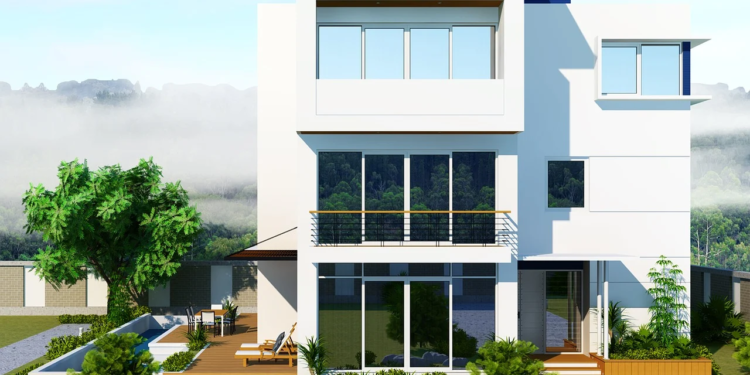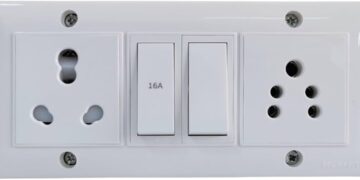In India, home isn’t just about walls and roofs—it’s a place filled with emotions, energy, and beliefs. For many families, Vastu Shastra plays a significant role when building or painting a house. Among all the choices of colours suggested by Vastu, white is often seen as a peaceful and flexible option for outer walls. But does it truly fit within the Vastu framework?
Let’s understand how Vastu colours for home relate to exterior design, and why a white house paint exterior is often seen as a practical and balanced choice for those who seek harmony at home.
Why Colour Matters in Vastu?
Vastu Shastra links every section of a house with natural elements – like earth, air, fire, water and space. It believes each colour carries a distinct energy that flows through homes. So, choosing suitable wall colours is as significant as layout directions in Vastu.
The outer walls and exterior of your home are like its skin. It’s the first interaction point with the external environment. The right exterior colour doesn’t just reflect personal taste. As per Vastu, it actively allows more positive energies from nature into your inner living space.
So, when painting house exteriors, considering Vastu-recommended colour meanings is very important. Colours need to be picked while keeping the natural light, landscape and road orientation in mind. This helps strike a balance through visual appeal and by channelling proper external energies inside homes.
What White Symbolises in Vastu?
White stands for simplicity, clarity, and calmness. It doesn’t carry any heavy emotional weight, which makes it easy to live with. In Vastu terms, it’s considered a neutral and peaceful colour that doesn’t overpower any direction or element. This neutrality is what makes it acceptable across all sides of a house.
Some reasons why white fits Vastu principles:
- The shade white brings a sense of openness and freshness.
- It also reflects light naturally, which can brighten up a space without creating an imbalance.
- It works as a blank background, allowing other Vastu-friendly colours (like earthy tones or green plants) to shine beside it.
How White Performs in Different Directions (Vastu-wise)
In Vastu, directions are linked with elements. While some colours are meant only for certain directions, white is more forgiving. Here’s how it works direction-wise:
- North (water element): White promotes coolness and openness.
- East (air element): White works well with morning light, spreading positivity.
- South (fire element): White softens the intense heat from this side.
- West (earth element): White balances heavy energy and keeps things grounded.
So, whether your house faces north or west, using white on the outer walls won’t go against Vastu logic.
Practical Benefits of White Exterior Paint in India
Apart from its alignment with Vastu, white has real-life advantages, especially for Indian homes:
1. Cools the House
White paint reflects sunlight, which helps reduce indoor heat. This makes it suitable for our hot summers, especially in states with intense sun.
2. Looks Bigger and Brighter
White makes small houses appear larger. It also brightens shaded areas by bouncing available light around.
3. Matches with Nature
White blends well with trees, plants, stone paths, and earthy tiles. It doesn’t clash with nature—it enhances it.
4. Easy to Pair with Accent Colours
Want to add a touch of colour to doors, window grills, or borders? White lets you do that without looking messy or loud.
5. Modern yet Traditional
White is one of those few colours that looks both timeless and modern. Whether your home design is simple or stylish, white adapts easily.
How to Make White Work with Other Vastu Colours
Though white is safe, some people may find it too plain. You can softly enhance it with small touches of other Vastu-recommended colours. Some suggestions:
- Use light yellow or cream around window trims or balconies.
- Add potted plants with green leaves along the outer walls.
- Paint the main door in a warm tone like brown or muted blue, depending on the direction.
- Keep the boundary wall in a soft, earthy colour to balance the brightness of white.
Such combinations not only keep your home Vastu-aligned but also make it feel warm and inviting.
Choosing the Right White for Outer Walls
White comes in different tones, some are bright, others soft. For Indian homes, the right white depends on the surroundings:
- In areas with heavy sun, go for a mild white to avoid glare.
- If your house is shaded or surrounded by tall buildings, pure white can bring in more light.
- In colder regions or hill areas, off-white with a yellow or beige tint gives a cosy effect.
Always paint a small patch on the wall and check it in daylight before finalising.
Tips for Maintaining White Walls
White can indeed show dirt, but with basic care, it can stay fresh:
- Wash the walls lightly once every few months.
- Keep rainwater pipes appropriately sealed to avoid stains.
- Trim nearby plants so they don’t touch the paint.
- Use good exterior paint with weather resistance, it lasts longer and requires less effort.
Clearing Common Misunderstandings
Many homeowners have doubts about using white outside. Here are some clarifications:
- “White is too plain for Indian homes.”
White is simple, but when paired with natural textures and green plants, it looks clean and peaceful, not dull. - “White attracts negative energy.”
Vastu doesn’t say that. In fact, white is neutral and safe when used properly, especially with clean surroundings. - “It gets dirty too fast.”
While white does show dust, it also shows you when it needs cleaning, which helps keep your home looking cared for.
Conclusion
Selecting the perfect paint shade for your house is a mix of personal style, climate needs, and, in many Indian homes. A white house paint exterior stands out as a wise choice that fits all these factors. It keeps things simple, reflects positive energy, and is easy to match with other elements.
As part of the Vastu colours for home, white holds a peaceful place. It allows your house to feel open and balanced without pulling too much attention. If you’re unsure about what colour to go for, white is a quiet, safe, and beautiful option that never goes out of place.















